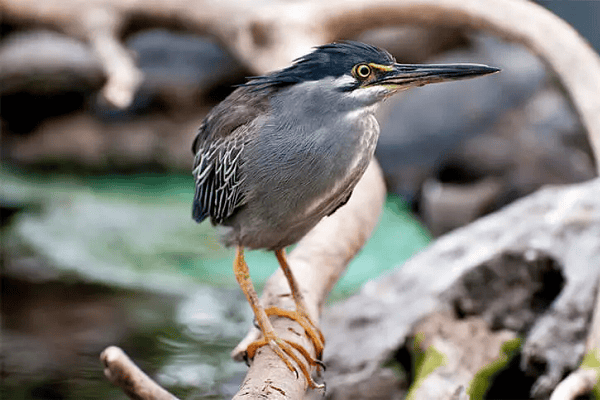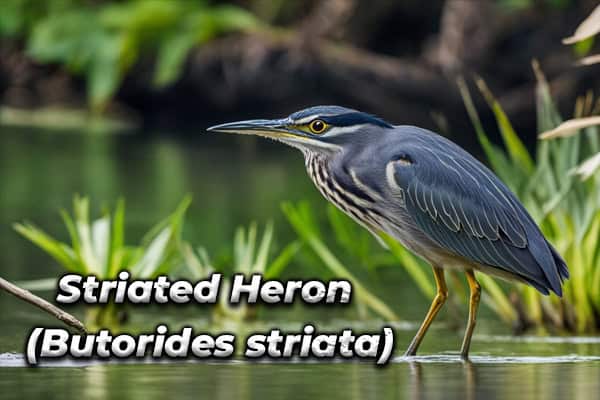Striated Heron: The Clever Hunter of the Shore
The Striated Heron (Butorides striata) is a small, intriguing bird found along the shores and wetlands of many parts of the world. Known for its unique hunting techniques and adaptable nature, this bird captivates bird watchers and nature enthusiasts alike.
~Here we’ll discuss Striated Heron and its characteristics~
Striated Heron
- Scientific Name: Butorides striata
- Weight: 200 – 250 grams
- Length: 40 – 48 centimeters
- Wingspan: 62 – 70 centimeters
- Lifespan: The lifespan of this species is not well documented.
1. Appearance
The Striated Heron is a small bird, typically about 16 to 18 inches long. It has a distinctive appearance with a dark cap, greenish-black back, and grey underparts. The bird’s neck is often streaked, giving it the “striated” name. Its legs are yellowish, which can change to a brighter orange during the breeding season.

2. Habitat
These herons are found in a variety of wetland habitats, including mangroves, marshes, and riverbanks. They are widely distributed across tropical and subtropical regions, found in areas from South America to Africa, and Southeast Asia to Australia. Their adaptability allows them to thrive in both freshwater and coastal environments.
3. Behavior and Hunting Techniques
What sets the Striated Heron apart from other birds is its remarkable hunting strategy. Unlike many birds that rely on speed or flight to catch prey, the Striated Heron employs a more patient and calculated approach. It often stands still, blending into its surroundings, and waits for fish or other small aquatic animals to come close. Then, with lightning speed, it strikes with its sharp beak.

One of the most fascinating behaviors observed in this bird is its use of tools. The Striated Heron has been seen dropping insects, feathers, or small pieces of food onto the water’s surface to lure fish. This bait-fishing technique is a rare and remarkable example of animal intelligence and problem-solving skills in the avian world.
4. Diet
The diet of the Striated Heron primarily consists of fish, but it is also known to eat insects, crustaceans, and small amphibians. Its opportunistic feeding habits allow it to take advantage of the most available food sources in its habitat, ensuring its survival in diverse environments.
5. Breeding and Nesting
Striated Herons are solitary nesters, often building their nests in trees or shrubs near water. The nests are constructed from sticks and lined with softer materials. The female typically lays 2-5 eggs, which both parents help incubate.
6. Conservation Status
Currently, the Striated Heron is not considered endangered. Its widespread distribution and adaptability have helped it maintain stable populations in many regions. However, like many wildlife species, it faces threats from habitat destruction and pollution. Conservation efforts to protect wetland environments are crucial to ensuring the continued survival of this clever and resourceful bird.
Wrapping Up…
The Striated Heron is a testament to the wonders of nature’s adaptability and intelligence. Its unique hunting techniques and ability to thrive in varied environments make it a fascinating subject for study and observation. Whether you spot one stealthily hunting along a riverbank or using its innovative bait-fishing method, the Striated Heron is sure to impress with its cunning and skill.
Recommended Articles:







